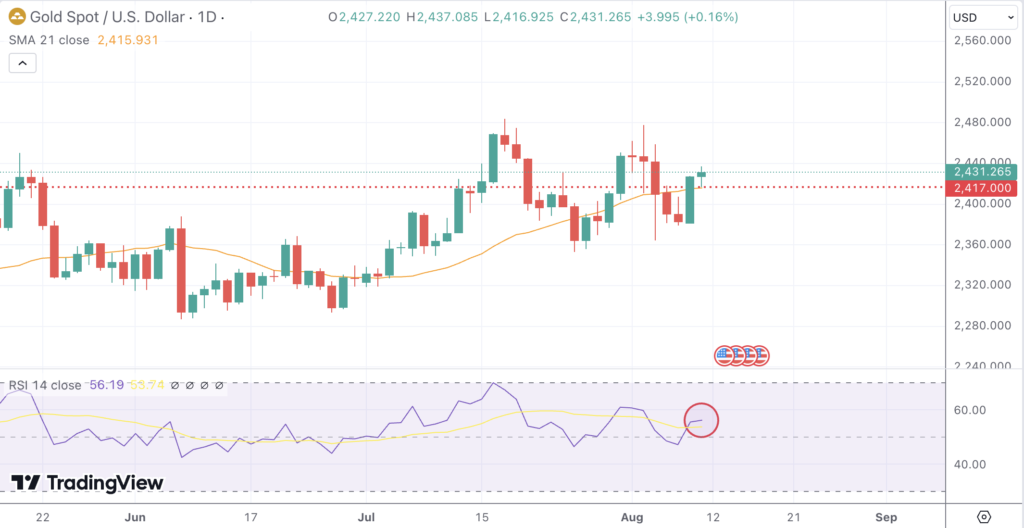Key Takeaways
- Gold prices have stabilized above $2,400 amid geopolitical risks and expectations for key US inflation data.
- The 21-day SMA at $2,417 is a critical support level, with further support at $2,400 and $2,388.
- US CPI data will be crucial in determining the next direction for gold, with higher readings potentially strengthening the US dollar and lower readings supporting gold.
- Geopolitical tensions, particularly between Israel and Iran, continue to support gold as a safe-haven asset.
Market Dynamics and Recent Performance
Gold prices have seen fluctuations around the $2,400 level as traders brace for a week filled with key economic data and ongoing geopolitical tensions. The gold market has been influenced by a combination of factors, including expectations for the upcoming US Consumer Price Index (CPI) data and developments in the Middle East. Last week, gold experienced a recovery after an initial dip, managing to stabilize above $2,400. This resilience is partly due to safe-haven demand driven by geopolitical risks, especially as tensions between Israel and Iran remain high.
Technical and Fundamental Influences
On the technical front, gold remains within a symmetrical triangle formation, indicating potential for a breakout in either direction. The 14-day Relative Strength Index (RSI) is holding above 50, suggesting that the bullish momentum may continue if key support levels hold. The 21-day Simple Moving Average (SMA) at $2,417 serves as a critical support level. A break below this could lead to further downside, with the next support at the $2,400 psychological level and then at $2,388, where a rising trendline offers additional support.

Fundamentally, gold’s performance is closely tied to the US Federal Reserve’s monetary policy outlook and the geopolitical landscape. The recent US Nonfarm Payrolls report fell short of expectations, reinforcing the belief that the Fed might consider rate cuts later this year. However, Fed officials have expressed caution, noting that inflation remains above the central bank’s 2% target. This has led to mixed signals in the market, causing traders to adopt a wait-and-see approach ahead of the upcoming US CPI data.
Geopolitical risks, particularly in the Middle East, continue to play a crucial role in supporting gold prices. Reports of potential military actions involving Israel and Iran have kept investors on edge, contributing to the safe-haven appeal of gold. This geopolitical uncertainty is likely to keep the downside limited, even as the market prepares for potential volatility with the release of US inflation figures.
Looking Forward
The week ahead will be pivotal for gold, with the US CPI data expected to provide key insights into the inflation outlook. A higher-than-expected CPI could strengthen the US dollar, putting pressure on gold prices. Conversely, a softer inflation reading would likely bolster expectations of Fed rate cuts, supporting gold. Additionally, any escalation in Middle East tensions could further drive safe-haven demand, providing an additional boost to gold prices.

